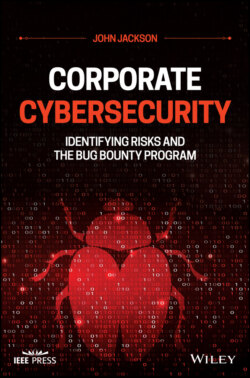Читать книгу Corporate Cybersecurity - John Jackson - Страница 11
1 The Evolution of Bug Bounty Programs 1.1 Making History
ОглавлениеUnderstanding the evolution of bug bounty programs first requires familiarity with the hacking landscape, or as many in the information security field know it, penetration testing. Security researchers haven’t always been respected or given the opportunity to shine. Throughout history, hacking has been a word that scares the public and creates waves of fear inside a company when rumors of a “hack” spread. The first bounty paid for breaking into something (in recorded history) was in 1851. Charles Alfred Hobbs was paid roughly the equivalent of $20,000 to pick a physical lock. (https://www.itspmagazine.com/itsp-chronicles/history-and-interesting-facts-about-bug-bounties-an-appsec-usa-2017-panel-recap).
The first actual bounty program was run by Netscape and it began in 1995. The primary scope was application testing for Netscape Navigator 2.0., their primary product. Slowly, other enterprises started to adapt their own bug bounty programs and offer awards. Bug bounty crowdsourcing platforms introduced the new wave, compiling enterprise programs into a neat catalogue in which security researchers could hop into various programs and begin to participate. Bugcrowd was known as the first crowdsourcing platform in bug bounty history and has been a key player in enterprise bug bounty program management. The pioneers – Casey Ellis, Chris Raethke, and Sergei Belokamen – believed in connecting latent potential to unmet demand with the overall goal of making security easier for everyone. In addition, Ellis firmly believed in assisting security researchers in keeping their records clean. Casey Ellis has also expressed a desire to help educate the youth toward the idea of ethical hacking, rather than a life of crime, and part of the inspiration for creating such a company has to do with the ideal of destigmatizing security research.
In all actuality, reviewing the state and history of bug bounty programs gives the reader a valuable positive perspective, but enterprises are slow to adapt. Even since 1995, there are still fewer than 400 bug bounty programs and 1600 vulnerability disclosure programs that exist in the world. The surprisingly small number of programs that exist in the world represent the resistance and conservatism of the field of legal hacking, otherwise known as security research.
